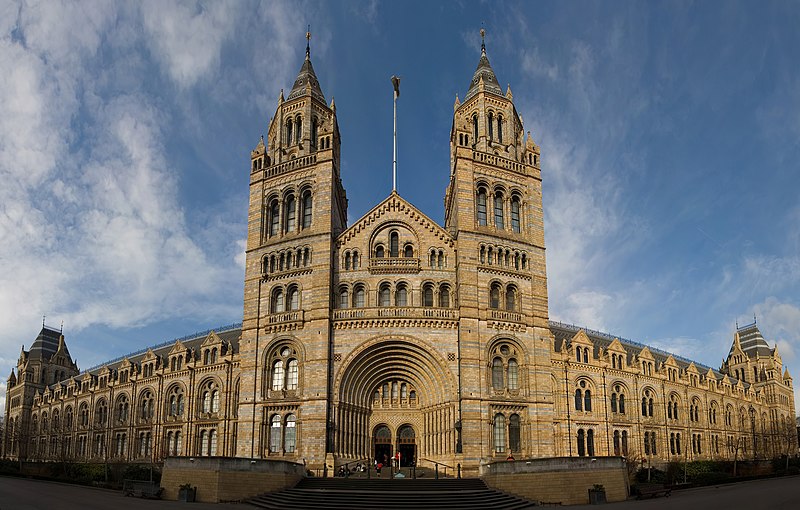The Natural History Museum contains some seventy million objects from every realm of life and every corner of the planet, with another hundred thousand or so added to the collections each year, but it is really only behind the scenes that you get a sense of what a treasure house this is. In cupboards and cabinets and long rooms full of close-packed shelves are kept tens of thousands of pickled animals in bottles, millions of insects pinned to squares of card, drawers of shiny molluscs, bones of dinosaurs, skulls of early humans, endless folders of neatly pressed plants. ... The spirit room alone holds 15 miles of shelving containing jar upon jar of animals preserved in methylated spirit.
Back here are specimens collected by Joseph Banks in Australia, Alexander von Humboldt in Amazonia, and Darwin on the Beagle voyage - and much else that is either very rare or historically important or both.
Back here are specimens collected by Joseph Banks in Australia, Alexander von Humboldt in Amazonia, and Darwin on the Beagle voyage - and much else that is either very rare or historically important or both.
How can that not capture your imagination? Just think of all the rare artifacts at the museum that have passed through the hands of exceptionally brainy people and all the knowledge that has been extracted. Think of the vast extent of the British Empire and their unique position to form an expansive collection for all their museums, including the Natural History Museum.

At the museum, we first attended their temporary Darwin exhibition (another link), which was wonderful. It told the tale of Charles Darwin's life, from his invitation to join the HMS Beagle on a voyage around the world as its naturalist, to his aha! moment stemming largely from observations on the Galapagos Islands, to the years after he finally published his theory of evolution through natural selection in On the Origin of Species in 1859.
 I have two favorite anecdotes about Darwin from the exhibit. The first was that he liked to "sample" (cook and eat) many of the animals he encountered on his travels. The second anecdote is from an encounter he had with gauchos in South America, who took him hunting for lesser rheas. The gauchos hunted rheas using bolas (two balls attached with a cord). When Darwin tried, he got his bola wrapped around the legs of his own horse. He wrote in a letter, "The Gauchos roared with laughter; they cried they had seen every sort of animal caught, but had never before seen a man caught by himself."
I have two favorite anecdotes about Darwin from the exhibit. The first was that he liked to "sample" (cook and eat) many of the animals he encountered on his travels. The second anecdote is from an encounter he had with gauchos in South America, who took him hunting for lesser rheas. The gauchos hunted rheas using bolas (two balls attached with a cord). When Darwin tried, he got his bola wrapped around the legs of his own horse. He wrote in a letter, "The Gauchos roared with laughter; they cried they had seen every sort of animal caught, but had never before seen a man caught by himself."If you haven't been to the UK (or visited since 2000), you might also be interested to know that Darwin's likeness now adorns the £10 note.
As for the rest of the museum, we looked at the exhibits on birds, dinosaurs, primates, geophysics, and minerals. We also visited The Vault, a display of rare (and often historically interesting) specimens of "gems, crystals, metals, and meteorites." The museum was great and I hope one day I can go back and spend more time there.






No comments:
Post a Comment